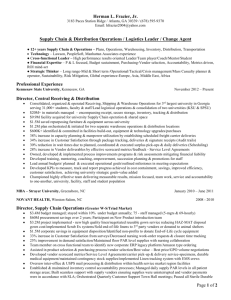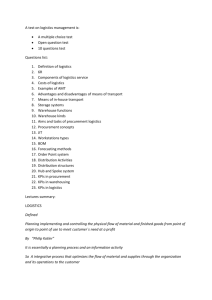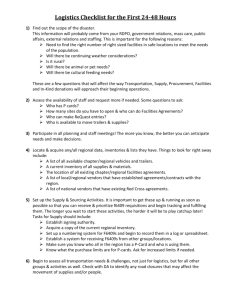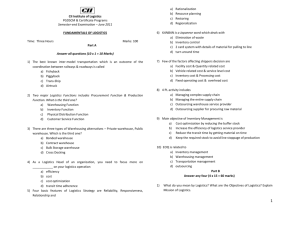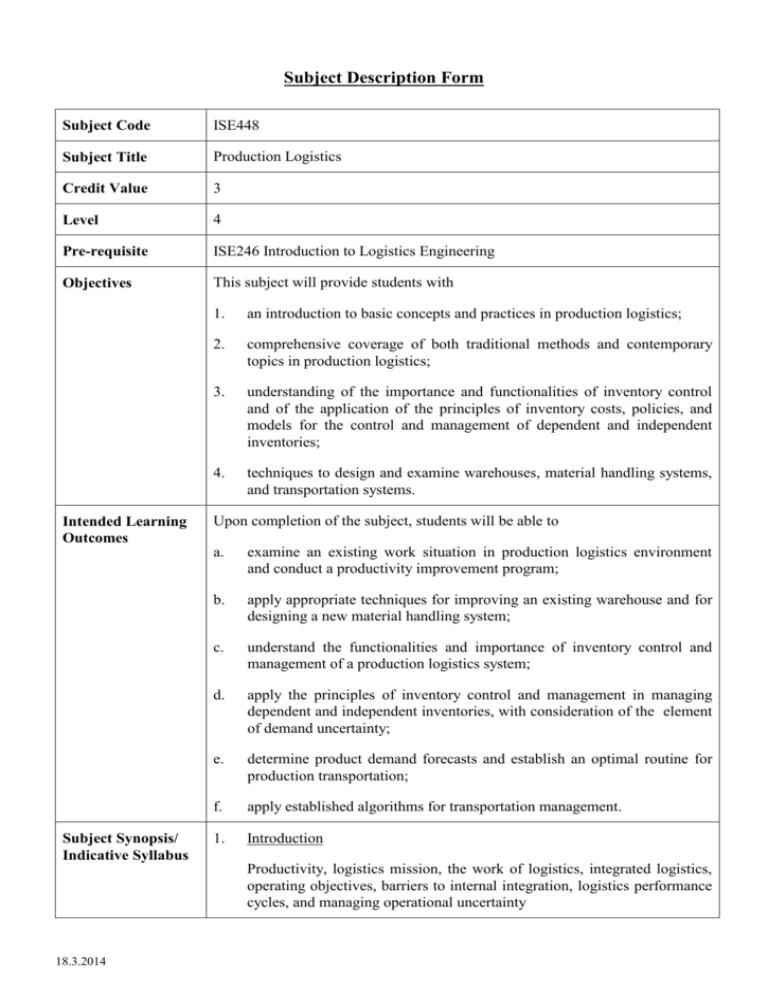
Subject Description Form
Subject Code
ISE448
Subject Title
Production Logistics
Credit Value
3
Level
4
Pre-requisite
ISE246 Introduction to Logistics Engineering
Objectives
This subject will provide students with
Intended Learning
Outcomes
Subject Synopsis/
Indicative Syllabus
1.
an introduction to basic concepts and practices in production logistics;
2.
comprehensive coverage of both traditional methods and contemporary
topics in production logistics;
3.
understanding of the importance and functionalities of inventory control
and of the application of the principles of inventory costs, policies, and
models for the control and management of dependent and independent
inventories;
4.
techniques to design and examine warehouses, material handling systems,
and transportation systems.
Upon completion of the subject, students will be able to
a.
examine an existing work situation in production logistics environment
and conduct a productivity improvement program;
b.
apply appropriate techniques for improving an existing warehouse and for
designing a new material handling system;
c.
understand the functionalities and importance of inventory control and
management of a production logistics system;
d.
apply the principles of inventory control and management in managing
dependent and independent inventories, with consideration of the element
of demand uncertainty;
e.
determine product demand forecasts and establish an optimal routine for
production transportation;
f.
apply established algorithms for transportation management.
1.
Introduction
Productivity, logistics mission, the work of logistics, integrated logistics,
operating objectives, barriers to internal integration, logistics performance
cycles, and managing operational uncertainty
18.3.2014
2.
MRP, DRP and Inventory Management
Dependent and independent demand inventory; Material requirement
planning and distribution requirements planning; Economic ordering
quantity and reordering models; Planning inventory resources and
accommodating uncertainty; Vendor inventory management systems; The
just-in-time concept; Collaborative, planning, forecasting, and
replenishment methods
3.
Warehouse design and material handling
Warehouse design: Layout design, the concept of honeycomb loss in goods
stacking, method of assigning dedicated storages; Material handling:
Equipment types and quantitative flow balance analysis
4.
Forecasting and its implication to Supply Chain Management
General forecast considerations, forecast processes, and techniques;
Simulation game to illustrate forecasting techniques and forecasting
impact on managing a supply chain
5.
Distribution networks and Supply Chain Dynamics
Function of distribution centers, cross-docking versus value-added
processes, determining the number of distribution centres required, and
warehouse management system
Teaching/Learning
Methodology
Assessment Methods
in Alignment with
Intended Learning
Outcomes
A mixture of lectures, tutorial exercises, laboratories, and case studies are used
to deliver the various topics in this subject, some of which are covered in a
problem-based format to enhance learning objectives. Others are covered by
directed study in order to enhance students’ ability in “learning to learn.” Some
case studies, largely based on actually industrial practices, are used to integrate
topics and thereby demonstrate to students how the various techniques are interrelated.
Specific assessment
methods/tasks
%
weighting
Intended subject learning outcomes
to be assessed
a
b
c
d
e
1. Group project
30%
2. Laboratory work
20%
3. Case study
20%
4. Quiz
20%
5. In-class
assignment
10%
Total
100%
f
The quiz and in-class assignments are designed to measure the students' depth of
18.3.2014
knowledge in production logistics. Laboratory work and case study are designed
to reflect the students' understanding of inventory management issues in
production logistics. The group project is designed to appraise student
recommendations in applying different techniques on production and warehouse
layout design.
Student Study
Effort Expected
Class contact:
Lectures/Tutorial
21 Hrs.
Seminar/Case studies
18 Hrs.
Other student study effort
Self-learning and practice for laboratory work
20 Hrs.
Self-learning and practice for project
28 Hrs.
Assignment and quiz preparation
25 Hrs.
Total student study effort
Reading List and
References
18.3.2014
112 Hrs.
1.
Stephens, MP & Meyers, FE 2010, Manufacturing Facilities Design and
Material Handling, 4th edn, Boston: Pearson Prentice Hall
2.
Nyhuis, P 2009, Fundamentals of Production Logistics: Theory, Tools and
Applications, Berlin: Springer
3.
Sule, DR 2009, Manufacturing Facilities: Location, Planning, and
Design, 3rd edn, Boca Raton: CRC Press
4.
Chase, RB, Jacobs, FR & Aquilano, NJ 2006, Operations Management for
Competitive Advantage, 11th edn, Irwin, New York: McGraw-Hill
5.
Tompkins, JA, 2003, Facilities Planning, 3rd edn, Hoboken, N.J.: J. Wiley



